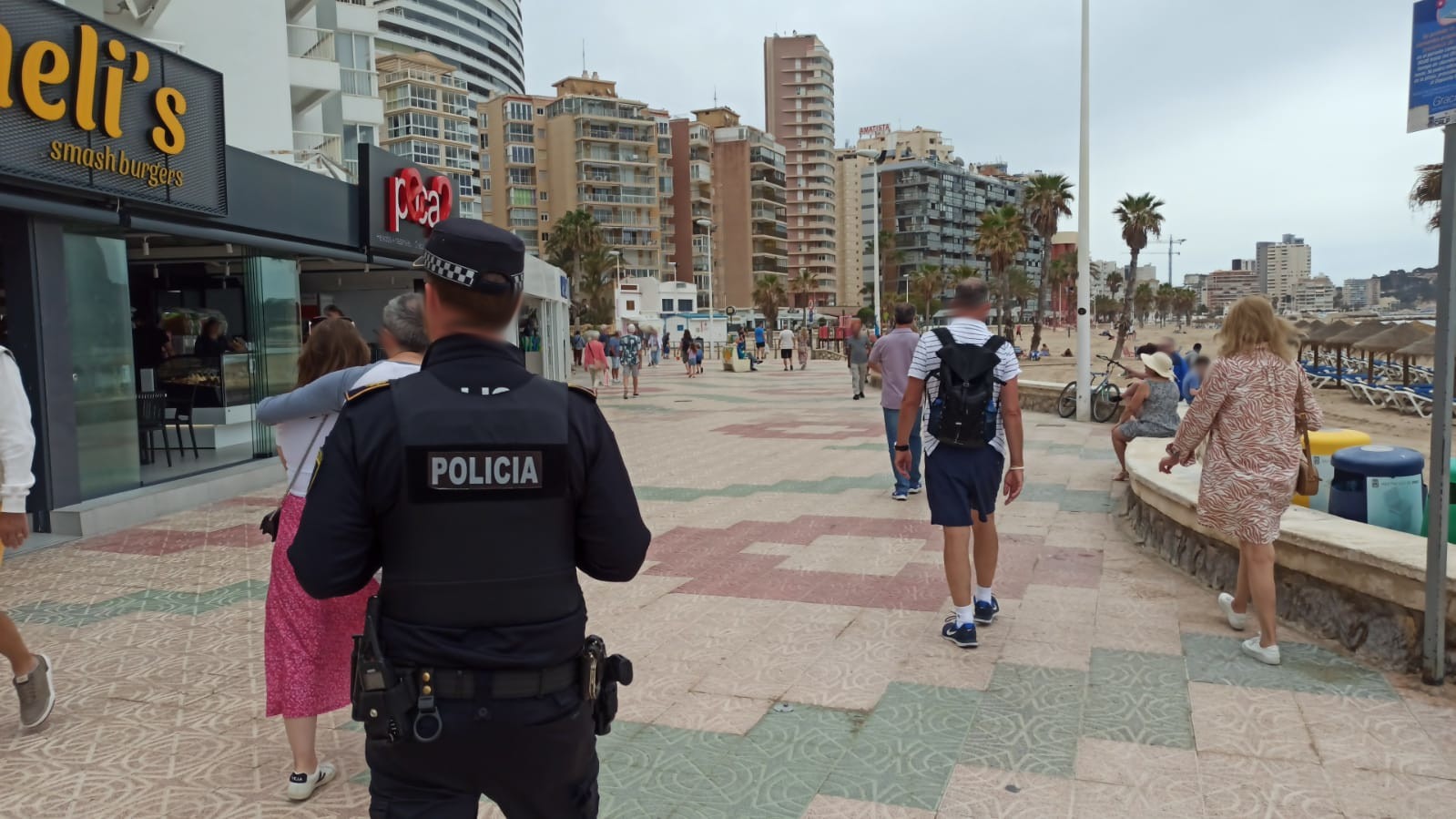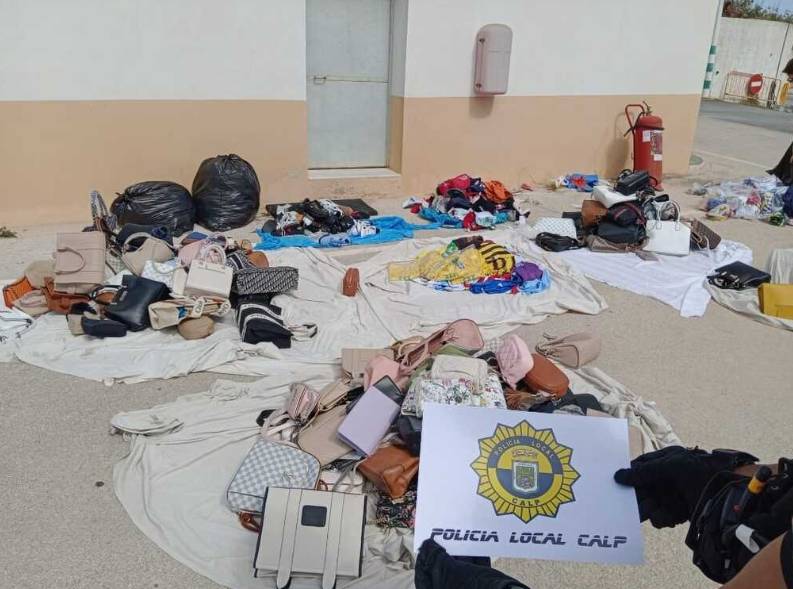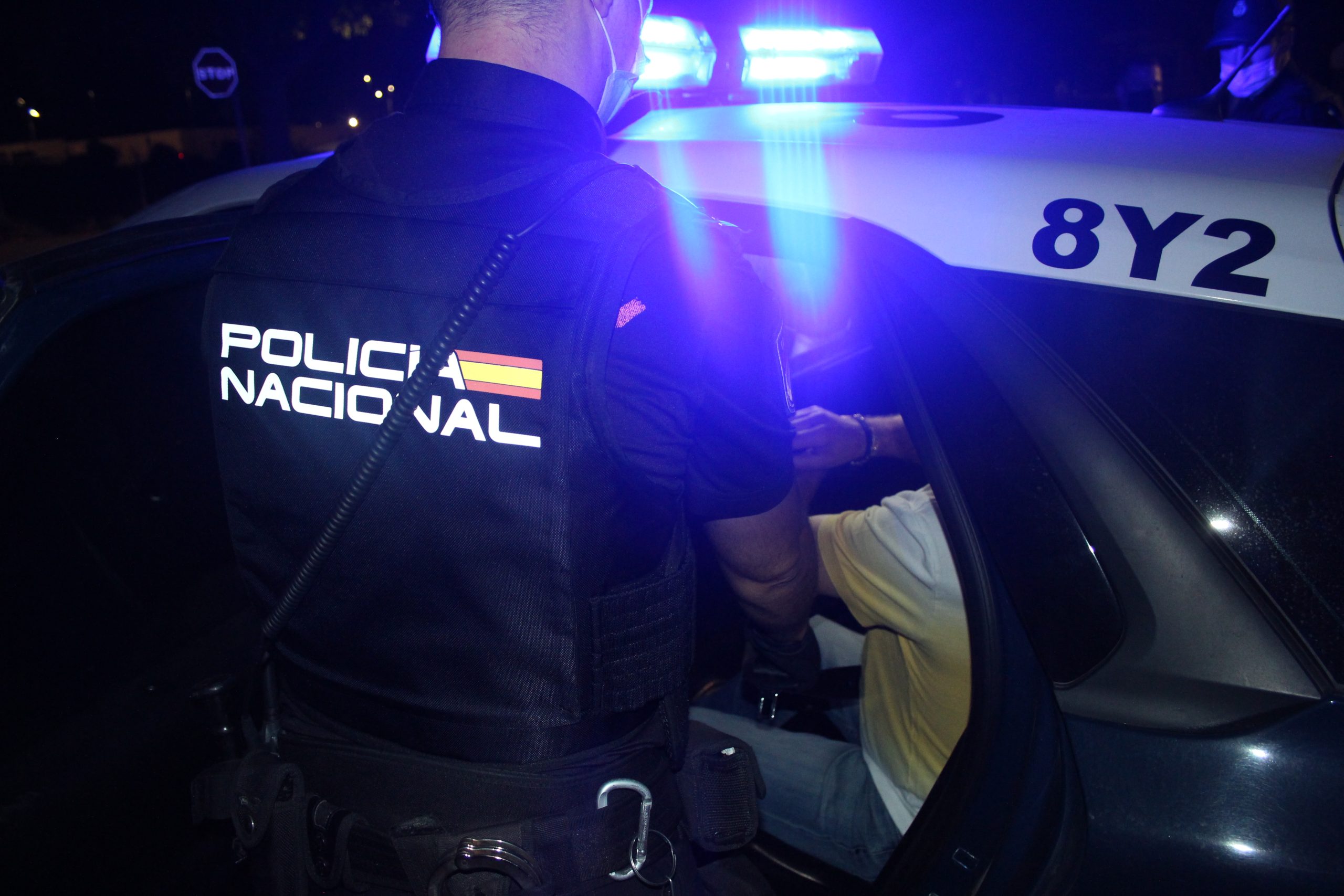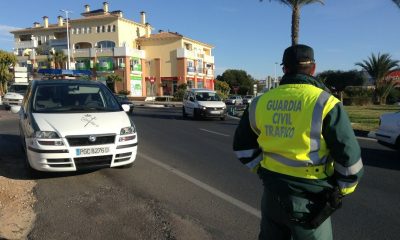Costa Blanca
Alicante’s Low Emissions Zone

Unlike in other cities, Alicante’s downtown will not see new limits on private car circulation as a result of the ZBE’s adoption. With the installation of numerous environmental sensors and surveillance cameras, however, the municipal government team guarantees that it will enable better management of atmospheric pollutant volumes in real time.
Sensors for the environment
There is no significant pollution problem in Alicante. Actually, out of all the major cities in Spain, several studies have found that ours is the cleanest. Still, we’re taking a number of targeted steps to bring it down even further. Our new infrastructure will be a huge boon, says Manuel Villar, our deputy mayor and environmental sustainability councillor.
The city’s Benalúa Market, Bullring, José Rico Pérez stadium, Station, and General Hospital are among the locations where fourteen sensors have been set up. When these readings reach dangerously high levels, the City Council will be able to take action, including temporarily shutting down traffic, based on the data.
Typically, the haze that occasionally originates from the Sahara is the culprit responsible for the most severe pollution incidents that Alicante experiences, rather than cars. But we haven’t gotten particularly extreme in recent years, and I don’t see the need to do something drastic. According to the deputy mayor, “at least we’ll have objective data to act objectively” now.
Cameras that record
To further keep an eye on traffic, new video surveillance cameras have also been set up. Although optical cable has been laid that might encompass as many as 300 recording devices, only about 100 have been operational so far.
“These cameras will not be used to fine drivers, but rather to provide us with information that will allow us to improve mobility in the city and to redirect traffic flows in order to reduce traffic congestion,” Villar points out.
Officially, the ZBE encompasses the Old Town, the Traditional Centre, and Gran Via, which together form three rings. Finally, this final zone will implement traffic limits in the same manner that they have done since 2011. So, these streets are off-limits to everyone save residents, garage owners, and employees. Sanctions will be implemented, and fines will shortly be increased.
Fines for cars that don’t follow the ZBE’s rules have been increased, according to a deal struck by the Federation of Municipalities. According to the Alicante traffic ordinance, they are currently around 80 euros, but Villar tells us they will likely climb to around 200 euros.
Greater urban density
The sea wind certainly helps Alicante’s air quality, which typically scores well on quality assessments; however, our city’s population has been growing at a large rate for a number of years.
We had 328,000 registered users a decade ago, and by the end of 2024, we had 359,000. Thanks to this change in population distribution, we are now the tenth most populous city in Spain, above Bilbao.
Even though there are more people living here and more cars on the road, pollution levels in Alicante have been rather constant in recent years. Pedestrianisation and lane reductions are two examples of the effective actions we have taken to reduce traffic on different streets. According to Villar, this is the path that we intend to take moving forward.
The Town Hall Area streets of Jorge Juan and Rafael Altamira will not be part of the pedestrianisation of the Town Hall Square.
Regarding this matter, it was recently declared by Mayor Luis Barcala that the Town Hall Square will be pedestrianised. It was indeed this very situation last autumn, when the Town Hall building’s façade collapsed, closing the street for weeks and forcing the closure of operations.
The city can keep running even without this traffic, thanks to this terrible occurrence. Also, the Councillor for Environmental Sustainability notes that town hall squares are usually not a common site for cars to circulate, both in Spain and elsewhere.
The project’s pedestrianisation will be limited to the area within the square; streets like Jorge Juan and Rafael Altamira will still be accessible for vehicles. Considering the bus routes that pass through this area, the next step is to do the necessary investigations to identify other transportation options. It is the expectation of the City Council that the works can commence by the year’s end and be finished in 2026.
Additional methods
Furthermore, we are assured by the government team that additional measures would be implemented to further decrease pollution levels.
All of the buses will soon be electric or hybrid models. Furthermore, we strive to enhance the tree cover and pavement size in every project we do. The deputy mayor assures us that, in addition to cars, they will promote the usage of scooters and bicycles.
Discover more from Costa Blanca Daily
Subscribe to get the latest posts sent to your email.
Costa Blanca
Walkway from Aguamarina to La Caleta in Cabo Roig will reopen, again

According to the notification from the Provincial Expropriation Jury to the Orihuela City Council following its approval of the court’s appraisal report, the municipal coffers will incur a cost of 26,180 euros for the expropriation of the land to reopen the pedestrian crossing connecting Aguamarina with La Caleta in Cabo Roig, near the Bellavista development.
The City Council has now requested that the Treasury deposit the specified amount in the receptacle and proceed with the preoccupation of reopening the promenade this summer.
Unable to reach an agreement, the local government and the proprietors brought the process before the provincial jury. Almost 17 times the municipal technicians’ calculation (€69,113), the proprietors presented a valuation of €1.2 million for their 227-square-metre cliffside plots in January of last year.
Nevertheless, this proposition was a decrease from the 3 million euros that they had initially requested. The 52 residents of the residential complex have established a price of approximately 170,000 euros for the 142 square meters of land that is to be expropriated, which is a decrease from the previous price of 2 million euros. Conversely, Cabo Roig SA has requested 987,000 euros (previously 1 million euros) for 85 square meters of hotel use. The City Council’s initial assessment was 44,000 euros.
The jury ultimately found that the City Council had to pay just over €26,000. The 2024 budget allocated €600,000 for the expropriation of the land and the necessary works to reinstate an idyllic pedestrian promenade along the Orihuela coastline. This should be kept in mind. This promenade has been accessible to the public for many years, but it has been closed since December 2021. The City Council closed it in accordance with a court judgement, which necessitated a two-kilometre diversion for residents and numerous visitors to circumvent a section that was only 60 metres in length.
The residential development was authorised prior to the Coastal Law and the General Urban Development Plan (PGOU) of 1990, which mandated that the initial line be used for public purposes. Nevertheless, the City Council refrained from expropriating this section, which ensured the promenade’s continuity along the entire littoral. In 2013, the residents of the development constructed a wall to seal off the path that runs along the precipice and is adjacent to the gardens of their residences.
In 2013, the local government, at the request of the socialist Antonio Zapata, the councillor for urban planning at the time, initiated the process of restoring urban planning legality against the development. The process involved the installation of a barrier and a wall, which impeded traffic on the section.
In March 2015, City Hall employees employed sledgehammers to breach the gate and wall, thereby allowing the public access to the trail, with the support of the Supreme Court of Justice (TSJ). In 2016, the Elche Administrative Court ruled in favour of the residents of the development, annulling the rulings and directing City Hall to restore the cliff walkway at the Bellavista I residential complex, which was never considered public property.
Although the local government has been appealing its enforcement, the ruling became final when the City Council, which was then governed by the People’s Party (PP), did not appeal. The Provincial Coastal Service reported in May 2017 that a right of way impacted the land in Aguamarina. Consequently, the 52 residents of the residential complex were unable to close the passageway and were required to maintain it undisturbed.
The City Council filed an appeal against the October 4th, 2018, order, which ordered the fencing and restitution of the demolished wall. The TSJ overturned the appeal in a November 2020 ruling, stating that the wall was legally constructed by the residents prior to the implementation of the current Coastal Law, which is the foundation of the Provincial Coastal Service’s right of way discussion. The City Council assumed the report and was subsequently obligated to execute the 2016 ruling, which mandates the reconstruction of the demolished perimeter fence and annuls the 2013 agreement of the Governing Board and the 2015 demolition decree.
Therefore, in December 2021, it was once again closed to adhere to the ruling, which mandated that the City Council restore it to its original condition.
Discover more from Costa Blanca Daily
Subscribe to get the latest posts sent to your email.
Costa Blanca
Crackdown on illegal sales in Calpe

As part of a campaign against street vending that will be further bolstered in the spring and summer of 2025, the Guardia Civil and Local Police have deployed over 25 officers and a drone to the beaches of Levante and Poniente.
A police operation was conducted a few days ago to combat the illicit sale and counterfeiting of products by plainclothes and uniformed officers from the Guardia Civil and the Calpe Local Police. The prevention and deterrent campaign against illicit street vending will persist throughout the spring and summer of 2025, and this action is a component of it.
The Guardia Civil officers from the Main Post and the specialised unit PAFIF (Tax and Border Patrol), which monitors borders and controls taxation in our country, as well as the UTAI and USC CALP units of the Calpe Local Police, were involved in the police operation, which was aided by a drone from the UMAC (Calpe Local Police Aerial Means Unit). This police operation, which was conducted on the Levante and Poniente beaches of Calpe, involved over 25 officers from both forces.

In the course of the operation, 180 leather products, 212 T-shirts, 38 swimsuits, 12 caps and 291 pairs of trainers were confiscated, in addition to five vehicles that were purportedly used as warehouses. The prospective market value of all counterfeit items, which includes the value of the immobilised vehicles and the seized materials, is €15,000. The competent authorities were also informed of the sellers who were identified.
The Councillor for Citizen Security of the Calp City Council, Guillermo Sendra Guardiola, conveyed his satisfaction with the positive relationship and spirit of collaboration and cooperation between the Guardia Civil and the Local Police. “The councillor underscored that the fact that both forces are collaborating, despite their differences in resources and efforts, results in heightened safety for Calpe residents and visitors.”
The local government’s dedication to law enforcement is complemented by its efforts to increase community awareness of the risks and repercussions of supporting this unlawful trade, as the municipal ordinance prohibits both the street sale and purchase of these products.
Discover more from Costa Blanca Daily
Subscribe to get the latest posts sent to your email.
Costa Blanca
Another man arrested for his alleged involvement in the death of a man during a fight in Alicante

Police sources say that the National Police have arrested a second individual in Alicante yesterday, Thursday April 17th, for their alleged involvement in the death of a man who was stabbed during a dispute near the General Hospital last Friday afternoon, April 11th.
Initially, authorities apprehended a male on suspicion of involvement in this incident, which resulted in a fatality and a knife wound that required hospitalisation. The person arrested is believed to be only 14 years old. The Violent Crime Group of the Alicante National Police Brigade is currently conducting an investigation, and no additional information has been disclosed regarding the identities of those apprehended.
Last Friday, at approximately 6:00 p.m., officers responded to a call and proceeded to an area near Alicante General Hospital. When they arrived, they found two individuals who had sustained injuries from a weapon. One of them passed away, while the other needed treatment in the ICU.
Discover more from Costa Blanca Daily
Subscribe to get the latest posts sent to your email.
-

 Costa Blanca2 weeks ago
Costa Blanca2 weeks agoThis week the DGT will issue over 64,000 speeding tickets
-

 Costa Blanca2 weeks ago
Costa Blanca2 weeks agoSix arrested for the use of AI to defraud over 19 million euros
-

 Costa Blanca5 days ago
Costa Blanca5 days agoTorrevieja records a 2.8 magnitude earthquake
-

 Costa Blanca2 weeks ago
Costa Blanca2 weeks agoFire in Benidorm sees two being treated for smoke inhalation
-

 Costa Blanca1 week ago
Costa Blanca1 week agoSpanish family killed in helicopter crash in New York
-

 Costa Blanca2 weeks ago
Costa Blanca2 weeks agoWhy aren’t salaries in Spain rising while everything else is?
-

 Costa Blanca2 weeks ago
Costa Blanca2 weeks agoBeware if you receive an orange envelope in your postbox
-

 Costa Blanca2 weeks ago
Costa Blanca2 weeks agoPolice are investigating a shooting in Alicante












